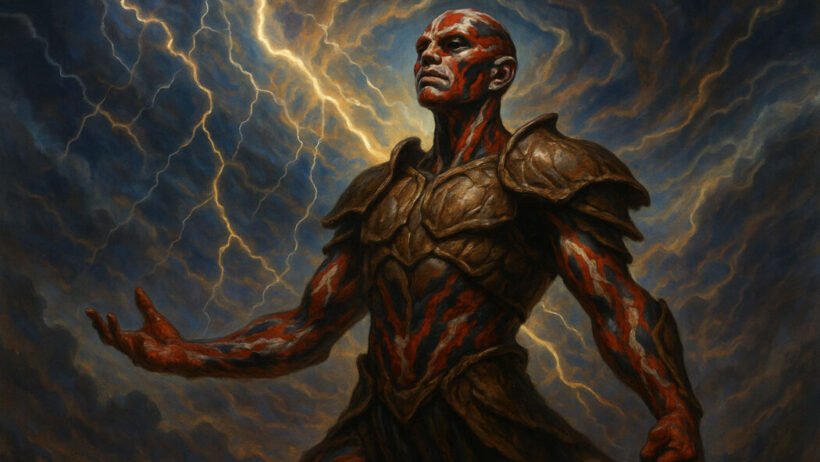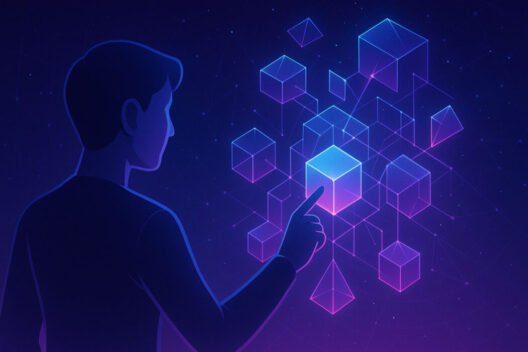Who Are the Parshmen?
A Docile Servant Race
In the vast and intricate world of Roshar, the parshmen are first presented as a race of placid servants. For centuries, they have been a cornerstone of human-dominated society, performing laborious tasks with an unyielding obedience. They are often regarded as little more than living automatons, a people seemingly devoid of their own will.
Their presence is a constant, yet they remain almost entirely unseen by their masters. The parshmen constitute a silent, subservient workforce, an apparently natural and unchallengeable fixture of the social hierarchy.
Physical Characteristics and Muted Minds
The parshmen have a unique and arresting appearance. Their skin is a canvas of marbled patterns of red, black, and white, and they possess a natural carapace that covers parts of their bodies. This lends them a distinctly non-human aesthetic, setting them apart from the other denizens of Roshar.
However, what truly sets them apart is their muted consciousness. They exist in a perpetual state of mental haze, deaf to the mystical Rhythms that bind their kin. Their thoughts are sluggish, their emotions subdued, and their voices are seldom, if ever, heard.
The Lost History of the Singers
From Ancient Origins to Enslavement
The reality of the parshmen is far more profound than their status as slaves would suggest. They are, in truth, the descendants of the Singers, the original, native inhabitants of Roshar. The Singers were once a dynamic and diverse people with a rich cultural tapestry and a profound connection to the world around them.
Long before the arrival of humans on Roshar, the Singers thrived in harmony with the land, their lives shaped by the Rhythms and their ability to bond with spren to assume various forms. They were the true children of Roshar, a people with a history that stretches back into the dimmest reaches of time.
The Curse of the False Desolation
The metamorphosis from Singer to parshman was the result of a cataclysmic event known as the False Desolation. In a desperate gambit to break a cycle of ruinous wars, a potent entity was imprisoned, but this act had an unforeseen and devastating consequence.
The imprisonment severed the Singers’ spiritual Connection to Roshar, stripping them of their Identity and their capacity to bond with spren. This spiritual lobotomy plunged them into the docile, mindless state that would characterize the parshmen for millennia.
The Great Awakening: The Everstorm’s Impact
A Transformation of Body and Mind
The advent of the Everstorm, a supernatural tempest of immense power, heralded a turning point in the saga of the parshmen. As the storm raged across Roshar, it carried with it a force that reawakened the dormant spirit of the enslaved race.
In a dramatic and often tumultuous transformation, the parshmen cast off their slaveform. Their minds cleared, their connection to the Rhythms was re-established, and they regained the ability to think, feel, and act for themselves. The docile servants were no more.
Reclaiming a Lost Identity
The awakening left the newly liberated Singers in a state of confusion and disarray. They were a people without a memory, a culture without a history. They had to rediscover who they were and what it meant to be a Singer in a world that had only ever known them as property.
This journey of reclaiming their identity is a central conflict for the awakened parshmen. They must navigate a world that now views them as a threat, while also contending with the trauma of their long bondage and the rediscovery of their own power.
Parshmen, Parshendi, Listeners: Understanding the Names
Clarifying the Terminology
The various names associated with this race can be a source of confusion. “Parshmen” was the human term for the enslaved Singers. “Parshendi” was the name given by humans to a specific group of Singers who had retained their minds, translating to “parshmen who can think.”
“Listeners” was the name this independent group of Singers chose for themselves. Now, with the awakening of the parshmen, the term “Singer” is being reclaimed as the proper name for their entire race, a powerful symbol of their unified and liberated identity.
A Reflection of Real-World Themes
Slavery, Oppression, and Dehumanization
The story of the parshmen is a poignant and compelling exploration of slavery and its enduring consequences. It delves into the ways in which oppression can strip a people of their culture, their history, and their very sense of self.
The dehumanization of the parshmen by their human masters serves as a stark and powerful allegory for the real-world horrors of slavery. Their journey from enslavement to liberation is a profound narrative of resilience, resistance, and the unquenchable fire of the will to be free.








